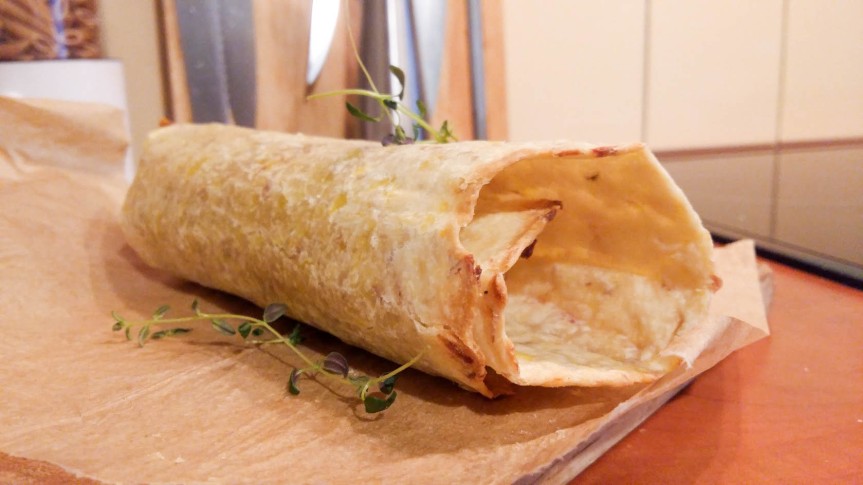My father was born in 1943. So, he was a child after the war. This was a terrible time. Estonia was occupied by the Soviet Union, Hunger and poverty. In March 1949, 20,722 people (2.5% of the population) were deported to Siberia.
Started collectivization. Forcibly was established collective farms, which means that all farmers must give all animals to collective farms. All over the countryside, the establishment of kolkhozes was announced and the majority of the peasants joined ‘voluntarily’, fearing that they would be deported if they did not sign up. During the 1950s, masses of farm animals would starve to death in late winter or early spring because of a lack of fodder. Collective farmers did not get first years any salary.
Because was lack of eggs and everything, children invented ” bread”, to have something to eat. They mixed potatoes, flour and oil and baked this on to the wood burning stove iron.
If you look at this recipe it may seem familiar. All nation over the world has a similar recipe. Flour and water and some oil and bake on the hot stone.
So, all ingenious is simple and all simple is ingenious.
Estonian Potato Flat Bread. Kartulipletskid

Ingredients
- 1 raw potato, grated
- 100 ml flour
- 1/2 tablespoon oil
Directions
- In a medium bowl, toss together 3/4 of flour, grated potato and oil. If you like to add some salt or other spices. Let set 10 minutes
- Knead the dough and add other flour. Knead. Knead. Knead. The dough has to be like very -very soft plasticine
- Let dough set 10-15 minutes.
- Share dough into the 4 balls and spread by hand flat.
- Put flat dough balls between two baking paper and roll Pletski paper-thin. With this same paper put Pletskid on to the oven and bake at 200 C for 10 minutes, while Pletski is crispy. The second option, fry the Pletski WITHOUT oil in a skillet from both sides 2-3 minutes.
If you want to read more about these times. Read Sofi Oksanen “Purge”
or books by Viivi Luik
Join Fiesta Friday #180 by adding your link. Don’t forget to link your post to FiestaFriday.net and the co-hosts’ blogs, so we can feature you. Your cohosts this week are Tracey @ My Baja Kitchen and Jhuls @ The Not So Creative Cook




Norwegians have lefse, which I love, and the Estonian version sounds very similar. Hispanics make tortillas. Yes, flat bread is in nearly every culture. Thank you for sharing your version, and for sharing part of your family/cultural history.
LikeLiked by 1 person
🙂
LikeLiked by 1 person
It’s always interesting for me to hear stories about that time in ex-communist countries. Also in Hungary I heard many interesting (and often sad) stories, at school in Italy we study of course this historical time, but not many of these everyday life details.
About the recipe: nice 🙂 as you and others said, many countries have flat breads: In Italy for example we have “piadina romagnola” made with flour, water, salt, baking soda and lard, in Sardinia there is “pane carasau” made with durum wheat flour, water, yeast and salt, there is “torta al testo” in Umbria region, “panigacci” in Liguria and Tuscany regions, but also the many types of “focaccia” and “pizza” are flatbreads 🙂 especially “focaccia barese” from Puglia region is also made with potatoes in the dough.
LikeLiked by 1 person
I hope you will share all recipes in your blog as well, it will be very interesting to try and test everything and find out differences 🙂
LikeLiked by 1 person
When I can and what I can I’ll do it sure 🙂
LikeLiked by 1 person
Interesting post! Thanks for sharing the recipe and the history behind it!
LikeLiked by 1 person
Thank you for reading 🙂
LikeLiked by 1 person
I haven’t heard of this bread before, but I bet this tastes amazing! Thanks for sharing at Fiesta Friday party!
LikeLiked by 1 person
Thank you for hosting 🙂
LikeLiked by 1 person
That bread looks amazing, actually! Such a brilliant creation out of necessity using humble ingredients. Creativity at its best! I do want to give it a try.
LikeLiked by 2 people
🙂
LikeLiked by 1 person
Wow! Thanks for sharing ..
LikeLiked by 1 person
I think your blog needs noticing! It’s great! So I’m nominating you for the Verstile Blogger Award. Visit https://hisperfecttiming.blog/2017/07/16/versatile-blogger-award/ to learn more. If you aren’t interested, no worries. God bless you.
LikeLike
Thank you !!! But I can write after few weeks. Thank you a lot !!!
LikeLike
You’re welcome. Congratulations!
LikeLike
I love learning about new cultures and food. Sounds very similar to Norwegian Lefsa. But the world abounds with flatbreads. So wonderful to see each country’s uniqueness shine through in their spices and recipes.
LikeLiked by 1 person
You wekcome 🙂 thank you for your comment !!
LikeLiked by 1 person